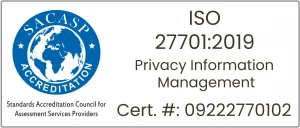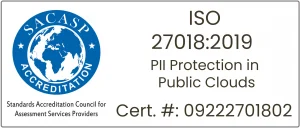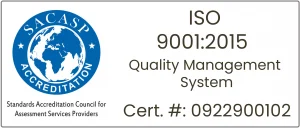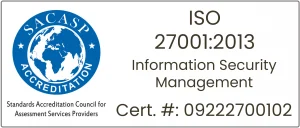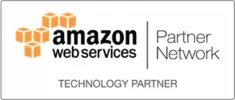© 2025 Macro Global. All Rights Reserved.
Navigating the complex web of financial regulations, from the FCA’s changing requirements to cross-border obligations such as CRS, takes up an increasingly large share of Financial Institutions’ capital. Estimates suggest that companies will spend considerable budgets in 2025 just to fulfill these requirements, a stark pointer to the rising complexity. This increase in frequency, granularity, intensity, and the need for timely and precise data pose daunting challenges. Yet, a strategic imperative arises in this complexity: automation.
This blog addresses the need for smart automation as a critical necessity for financial institutions to thrive in the changing regulatory landscape of 2025 and to transform reporting from an expensive burden into a true strategic advantage.
2025: Key Strategic Priorities for Financial Institutions
In 2025, financial institutions are focused on building resilience, growing agility, and creating sustainable growth in the digital-first world. This necessitates a fundamental transformation of operating models, with technology serving as the catalyst for achieving strategic goals. The priorities of financial institutions are:
- Enhanced Customer Experience: Financial Institutions are working towards creating seamless and personalised experiences across all touchpoints. Therefore, it becomes essential to simplify back-office processes, free human capital to spend on customer-centric initiatives and proactive outreach and eventually develop greater trust and loyalty.
- Operational Efficiency and Cost Management: Financial Institutions are bound to minimise resource utilisation and eliminate inefficiencies. Such results can be achieved via error reduction, acceleration of report generation, and prevention of manual interventions, releasing valuable resources and reducing operating overhead.
- Risk Management and Resilience: Financial Institutions are interested in bolstered defence against financial crime, cyber threats, and business disruption. Hence, maintaining data integrity, enabling proactive detection of risk through cutting-edge analytics, and facilitating quick response to regulators is paramount.
- Digital Innovation and Transformation: Financial Institutions are investing in new technology to upgrade infrastructure, enhance service delivery, and achieve new revenue streams. Embedding compliance as a core function, rather than an afterthought, encourages innovation with a solid foundation of regulatory compliance.
- Data-Driven Decision Making: In the current data-intensive era, the capability to derive valuable insights from information is a differentiator. Reliable and well-formatted reporting data must be utilised for strategic planning, risk analysis, and discovering business opportunities so that financial institutions can make better-informed and data-driven decisions.
Effective and precise regulatory reporting is a core enabler of these wider strategic objectives. Through the automation of reporting functions, financial institutions can better navigate the changing regulatory environment with increased agility and confidence in 2025 and beyond.
Challenges in Regulatory Reporting
The regulatory reporting landscape for financial institutions presents huge operational and technical challenges. Unravelling this intricate environment requires a strategic and technology-oriented approach.
- Data Silos and Fragmentation: Financial Institutions commonly rely on legacy systems, each containing discrete data sets corresponding to varied products, customer groups, or regions. The retrieval and consolidation of the scattered data into an integrated view for reporting is a laborious and error-filled process, preventing the generation of comprehensive and accurate reports.
- Manual Processes and Human Error: The use of spreadsheets and manual data entry results in inaccuracies, inconsistencies, and possible regulatory fines. In addition, manual processes are inefficient and cannot scale with growing reporting requirements.
- Evolving Regulations: The regulatory environment is constantly changing, with regular updates, new requests, and changing interpretations (for example, the progressive implementation of Basel IV). Coping with changing details and adjusting reporting mechanisms accordingly poses a substantial burden, requiring ongoing surveillance, interpretation, and enforcement efforts, testing already over-extended compliance teams.
- Strict Deadlines and Limited Resources: The rush to meet the tight reporting deadlines while achieving accuracy and completeness may result in bottlenecks to operations and additional stress to staff. The sheer number and frequency of report requirements further strain these limited resources.
- Lack of Standardisation: The absence of standardisation between various regulatory organisations and geographies introduces another level of complexity. Differing data formats, reporting templates, and submission protocols require customised processes and mappings, which enhance the effort and expense of compliance, especially for financial institutions across multiple geographies.
- Auditability and Traceability: Manual operations usually do not have the strong audit trails that automated systems offer, and tracing the origin, changes, and validations applied to the reported numbers becomes challenging, with possible compliance
Specific Reporting Challenges
Single Customer View (SCV)
- Data Aggregation and Reconciliation: A SCV report requires aggregating and reconciling large volumes of customer data that are spread across different systems. Determining unique customers across different product holdings and maintaining data consistency across these systems is a major technical challenge.
- Data Quality and Consistency: Inconsistencies in data format, validation rules, and data entry methodologies between systems can undermine the integrity of the consolidated view, causing inaccurate reporting.
- Privacy and Data Governance: Handling sensitive customer information in adherence to GDPR, maintaining data security, anonymisation where necessary, and adherence to data governance rules in the process of aggregation and reporting introduces a huge level of complexity.
- Real-time Updates: Strong integration frameworks and high-speed data handling capabilities are required to keep a constantly updated and complete picture of customer information across all systems.
Common Reporting Standard (CRS)
- Identifying Reportable Accounts: Proper identification of accounts of tax residents of reporting jurisdictions involves advanced data analysis and application of intricate due diligence rules, typically requiring interpretation of residency indicators and other customer data.
- Data Collection and Due Diligence: Establishing effective and compliant methods of collecting and authenticating information needed for reporting CRS, including self-certifications and other supporting documentation, proves difficult for entities that have large and diverse bases of customers.
- Sophisticated Reporting Formats and Transmission Needs: Compliance with the OECD’s designated XML schemas and transmission protocols for CRS reporting requires technical skills and strong data transformation capabilities. Discrepancies in formatting or transmission may cause reporting failures as well as the imposition of penalties.
- Keeping Pace with Participating Jurisdictions and Rules: The participating jurisdictions and their corresponding CRS rules change. Financialinstitutions need to stay up to date with these changes and modify their reporting processes and systems accordingly to maintain continuous compliance.
To overcome these complex challenges, there is a need for a strategic transition to automation, utilising technology to automate processes, improve data quality, and provide correct regulatory reporting.
Automation: The Solution for Unleashing Reporting Efficiency
Automation tackles the challenges in the following ways:
- The Unified Data Layer: Automation tools have strong data integration capabilities, bringing together disparate source systems, ranging from core banking systems to niche transaction databases. This ability creates a unified data layer, providing a complete view of the information required for accurate regulatory reporting and eliminating the problems caused by scattered data sources.
- The Strength of Workflow Automation: Manual report generation, data validation, and data entry take time and are subject to human error. Automated workflows put these processes in digital form, which guarantees the accuracy of the data, expedites the generation of reports, and diverts valuable human resources away from routine tasks to strategic initiatives and analysis.
- Embedded Regulatory Intelligence: Cutting-edge RegTech solutions include functionality for real-time monitoring of regulatory updates and changes. This intelligence is natively embedded in the reporting logic so that the system can automatically respond to new requirements, minimising the likelihood of non-compliance and effort for manual updates and interpretations.
- Rapid Reporting Cycles: Automation considerably accelerates the overall reporting cycle from data retrieval and mapping to report creation and filing. This allows financial institutions to comply with stringent timeframes more easily and with more effectiveness, easing the stress on resources and lowering the risk of fines due to delayed or incorrect filings.
- Standardised Data Governance: As the absence of standardisation between data sources and report formats can create inconsistencies and reconciliation issues, automation imposes pre-defined data quality rules, checks data against defined criteria, and standardises report formats for uniformity and comparability of information across various regulatory filings.
- Ensuring Traceability and Transparency: Automated systems naturally preserve rich audit trails, carefully tracking data lineage, transformations, and processing actions. This provides an unambiguous and transparent history of how reports are produced, enabling regulatory audits and improving accountability.
Automated Data Mapping for Regulatory Compliance
A key to successful regulatory reporting automation is the smart and transparent mapping of data from the Core Banking System (CBS) to the granular specifications of varied reports, like the Single Customer View and the Common Reporting Standard. The CBS, being the central repository of a financial institution’s customer and transactional data, contains the raw material for compliance. Yet the process from this raw data to reports ready for regulation is riddled with complexities that cannot be overcome by manual methods. It is here that automatic data mapping becomes a key enabler. Several techniques power this crucial function:
- Rule-Based Mapping: Defines clear rules using pre-defined logic and data dictionaries.
- Keyword/Semantic Mapping: Matches and connects data fields according to their meanings and contexts.
- Visual Mapping Interfaces: Translates source and target data fields into executable mapping logic using easy-to-use graphical tools.
- AI/ML-Driven Mapping: Supercharging regulatory reporting with AI and Machine Learning signifies the next step in evolution, bringing an intelligent layer of decision-making and analysis that goes beyond conventional capabilities. These newer technologies go beyond programmed rules to learn from patterns in data, forecast future risks, and evaluate complicated information with unprecedented speed and precision. They can help with reporting in the following ways:
- Data Quality Improvement: AI/ML models have the potential to process large datasets and detect hidden anomalies, inconsistencies, and possible errors that may go undetected under rule-based checks. For example, an ML model can pick up on sophisticated patterns and mark outliers in customer profiles or transaction information, drastically enhancing the credibility of reported data.
- Predictive Compliance: AI systems can scrutinise transaction behaviour to recognise deviations pointing towards suspicious activities such as money laundering, thus allowing for pre-emptive intervention, and enhancing an FI’s compliance stance.
- Automated Document Processing: Natural Language Processing in AI enables the extraction of key data points from scanned documents and text-based sources such as onboarding forms, legal agreements, and KYC/AML documents.
- Smart Alerting: Rather than inundating compliance teams with generic alerts, AI can filter and contextualise alerts by risk scores and potential impact.
- Regulatory Change Management: AI-based tools can track regulatory changes from multiple sources, evaluate their effect on current reporting requirements, and even recommend adjustments to data mappings and reporting logic that are required.
Thus, Rule-based systems manage predictable and structured workloads effectively, whereas AI/ML addresses complexity, detects latent patterns, and delivers predictive insights. This constructive collaboration develops a strong and smart regulatory reporting framework that is efficient and insightful, allowing financial institutions to drive through the changing landscape with more confidence and control.
To Wrap up
To financial institutions in this transformative process, innovative solutions are cropping up. Macro Global’s SCV Forza is a highly scalable ETL automation platform designed with a specific focus on FSCS Single Customer View (SCV) reporting. Riding on advanced data integration and AI-driven data quality management, SCV Forza breaks down data silos, offering a holistic and accurate picture of every customer, which a pillar of efficient regulatory reporting, risk management, and better customer experience. In addition, SCV Forza handles huge volumes of data effortlessly with minimal errors via AI-assisted validation and reconciliation, ensuring financial institutions maintain accuracy while cutting massive manual efforts.
Likewise, CRS Stride is a smart automation platform specifically designed for HMRC’s Common Reporting Standard and FATCA reporting obligations. This solution makes the whole CRS reporting process easier, handling everything from collecting data and checking it to creating detailed reports and securely sending them to tax authorities, while ensuring complete control and data accuracy through strong audit features. By automating these complex processes, CRS Stride financial institutions to stay abreast of changing international tax regulations.
By embracing automation, financial institutions can attain sustainable compliance and unlock critical efficiencies, minimise operational risk, and ultimately, prioritise delivering greater value to their customers.
Talk to our regulatory consultants and prepare ahead for 2025 Compliance Obligations
Book a Free Consultation
The regulatory reporting of the future is intelligent, automated, and strategically led – are you prepared to take that stride? Contact us today!
Related Posts
19 November 2025 FSCS Single Customer ViewRegulatory Technology
PRA PS24/25 & SS18/15: Detailed Compliance Bulletin for FSCS Limit Update
Key compliance actions under PRA PS24/25 and SS18/15 for FSCS limit updates, SCV changes and disclosure obligations.
18 November 2025 FSCS Single Customer ViewRegulatory Technology
Regulatory Update: FSCS Deposit Protection Limit Rising to £120,000 – Key FSCS SCV Reporting Changes for Banks and Deposit Taking firms
FSCS changes for 2025 raise the protection limit to £120k. See what banks and other Fis must do for SCV reporting, THB updates, and regulatory compliance under the new rules.
18 November 2025 FSCS Single Customer ViewRegulatory Technology
SCV and Cloud Adoption for PRA & FSCS Compliance: A Guide to Operational Resilience
Learn how cloud-enabled SCV strengthens PRA and FSCS compliance, improves operational resilience, and enhances depositor protection for financial institutions.




